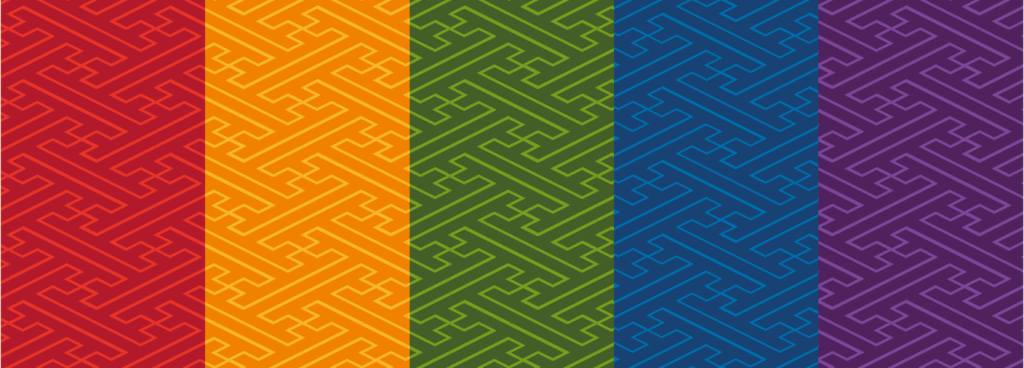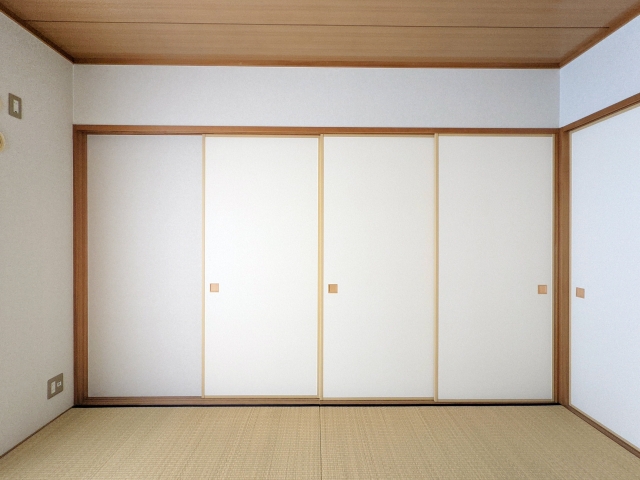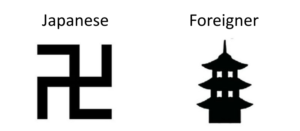Each kimono fabric pattern has various meanings.
This article is about “Sayagata” pattern.
The representative auspicious pattern “Sayagata”
Sayagata pattern has commonly been used in both Kimono and Obi.
The pattern (looks like a maze) consists of a continuous deformated Buddhist swastika symbol(it’s called manji in japanese).

From the continuous manji’s shape, sayagata is symbolized as prosperity of descendants and long life.
Where did the name of Sayagata come from?
In the middle of the Edo period(Around the 1600s), There was a silk fabric called “Saya” which has the sayagata pattern.
Actually, The pattern had already been exist in japan before Edo period. In the Azuchi-momoyama period(1568-1600), The sayagata pattern was commonly used for dyed fabric without being named “sayagata”. I cannot help but wonder what the pattern was called…
Not only kimono but sayagata pattern is also commonly used for Fusuma(Paper covered sliding doors)

I am planning to release an article about Fusuma in the near future.
Difference between the Buddhist swastika symbol(manji) and the Nazi swastika symbol
Some people may not be comfortable with manji shape(卍) because the symbol is very similar to the Nazi swastika symbol.
However, the Nazi swastika symbol is so called “mirror-image-swastika” or ”Clockwise-swastika” and the shape is different from the Buddhist one.

By the way, Buddhist swastika symbols are used as “Buddhisum temple” sign in Japanese map.It can be enough to know how much Japanese treat the manji symbol as sacred symbol.
In the past, there was an argument about treating manji symbols as Buddhisum temples sign on map.
5 years ago, When I took part in a project of publishing japanese map for foreign tourists, one of the topics was “Not To remind some tourists of Nazis, manji symbols on map should be replaced with other symbols. ”
As a result of discussion,we decided to keep using manji symbols as it used to be and also determined “We want foreign tourists to understand the meaning of manji symbols through explaining the origin.
Incidentally, the alternative candidate symbol for buddhist temple on the map was “three-storied-pagoda”.
For some points,It is difficult to tell the exact difference between “temple” and “shrine”. One of the points is the “three-storied-pagoda” .

If the three-storied-pagoda was treated as Buddhism temple sign on maps, we could easily confuse the destination was “shrine” or “temple”…


